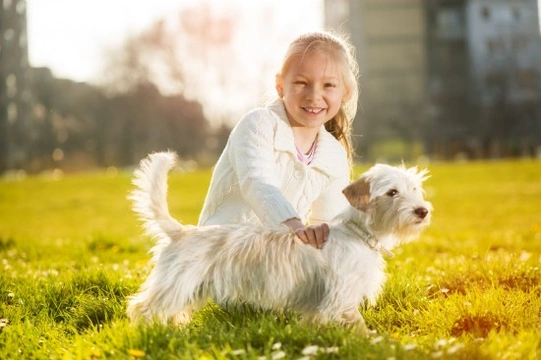
Pets & Autistic Children - A Great Combination
Research has proven just how owning a pet can have a massive impact on your health and how they can help keep a person active and fit. Hospitals, nursing homes and other healthcare facilities now regularly allow pets to visit so they can interact with people and the impact they have is quite extraordinary. Studies have now shown that children with autism can develop an encouraging and positive relationship with animals which in turn helps improve the child's behavioural skills because they are totally focused on the pets they're introduced to.
Is One Pet Preferable Over Another?
Much of the research has focused on how autistic children react to dogs and horses but more pets have been included in the studies over recent times. In Australia, the research involved gorgeous guinea pigs and children who interacted with them were happier, more talkative and even accepted other kids being near them. The study did not use "trained therapy" animals but instead put more importance on the guinea pigs that were used to being with children.
In France similar research showed the younger an autistic child was introduced to a pet, the better they interacted with them and the happier they became. The children were much more accepting of things they previously refused and this included sharing toys and food with other children as well as their parents.
In all the studies the one factor that remained the same no matter what pet was introduced into the environment whether it was a dog, cat, hamster or any other pet, was that autistic children were much happier in themselves all round. It is thought this is because the children were distracted from their normal stress related stimuli by the fact the animals were present which meant children's anxiety levels were dramatically reduced.
Why Do Pets Help Autistic Children so Much?
Nobody really knows why pets can play such an important role when it comes to improving an autistic child's social skills. Some experts believe it could be because a lot of children with autism actively seek out sensory stimulation and as such the act of petting and stroking a pet no matter what the animal is, can prove extremely comforting to them.
Tortoises, Turtles, Snakes & Some Lizards
On the other side of the coin, there are autistic children who refuse sensory stimulation and therefore an active dog or speedy cat might just be too much for them to cope with which is where slower moving creatures like a tortoise, snake or some species of lizards might be a better choice for them. Just watching the animals and not having to come into contact with them, can be truly beneficial for autistic children who cannot bear to be touched.
What the Experts Think
Many experts now feel owning a pet is truly beneficial for children with autism because it helps them learn empathy as well as responsibility all due to the factthey enjoy grooming, feeding and looking after their pets under the supervision of their parents that is. Smaller animals like guinea pigs, gerbils and hamsters are ideal because looking after them is a lot easier than say a dog that would need to be taken out for daily walks etc.
Experts also feel that a pet shows unconditional love and acceptance of an autistic child, something they don't typically receive from their peers which is another great reason for them to share their time with a small exotic easy to care for animal. Studies have also shown this in turn takes a little bit of pressure off their parents who may at times feel somewhat isolated and even frustrated at times.
However, experts recommend that parents should take a "trial run" first before deciding getting a pet whether an exotic, small animal, cat or dog would be beneficial for their child to have around. This is the only way to see if a child would react well to a pet or if they might react violently or aggressively to being around an animal. Pets would need to be introduced into an autistic child's lifeslowly and always monitored by parents to make sure everything goes smoothly and nobody or the animal gets a scare.
Letting Autistic Children Watch First is a Good Idea
Experts also think that an autistic child would be better off being given the chance to watch animals first without being able to come into contact with them. If the child remains calm during these "watching sessions" they could be allowed to have some physical contact with the animal they have been watching. This could then lead to them being allowed to hold their pets, stroke them and to interact with them in a calm and gentle way.
It might take a few "watching sessions" and several visits to a small animal centre before the transition to touching a pet could be allowed to happen, but patience is a virtue and as long as a child stays happy and does not get upset about the situation, allowing them to interact with a chosen animal could be the best thing for them and over time can really improve their social skills.



